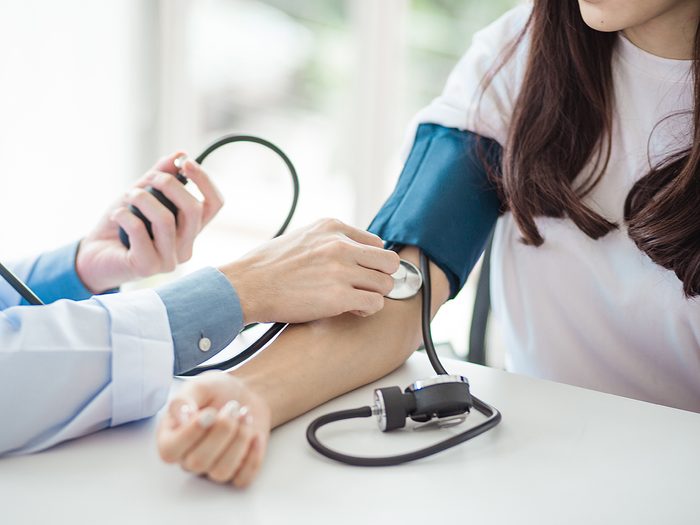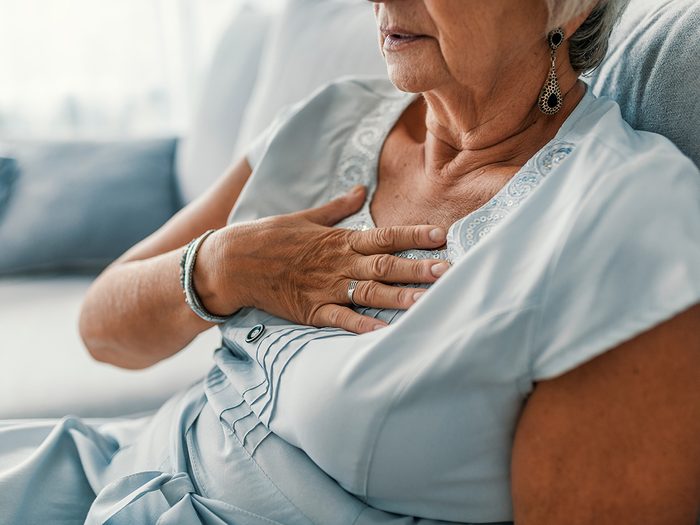
Women with Heart Disease Face Clinical Bias
A lack of discussion about heart disease is an ongoing problem, says Wendy Wray, director of the Women’s Healthy Heart Initiative, a nurse-led clinic at the Royal Victoria Hospital in Montreal that provides individualized care for women. “Research shows that when GPs see men and women with the same risk factors for heart disease, they’re more likely to talk to men about symptoms and reducing their risk than they are to women.”
The fact that women don’t know their risks or recognize their symptoms has a lot to do with a gender gap surrounding heart disease, says Lisa McDonnell, the program manager for the Canadian Women’s Heart Health Centre in Ottawa. This inequality may be the reason why women have much poorer outcomes and are more likely than men to die in the 30 days following a heart event. Even worse, Harvard Health identifies heart disease as the leading cause of death in women.
McDonnell says that a combination of biology—women’s reproductive cycles can affect study results—and clinical bias means that heart disease in women is under-researched, and therefore underdiagnosed and undertreated. “These sex-based inequities have been attributed to a lack of public and professional awareness of women’s coronary risk; knowledge gaps regarding symptom presentation; suboptimal screening and diagnostic approaches; and disparities in the application of evidence-based therapies.”

Heart Disease Symptoms in Women Often Go Unrecognized
In 2014, a national survey in the Canadian Journal of Cardiology found that not only do women not believe they’re at risk (40 per cent were at high risk for cardiovascular disease, yet 78 per cent considered their risk to be low or moderate), but close to 50 per cent can’t identify the disease’s major symptoms.
While women experience chest pain in 60 per cent of cases, says McDonnell, who led the national study, that’s often not their primary symptom. She notes that women are more likely to report so-called atypical symptoms, such as unusual fatigue, shortness of breath, back pain, anxiety, flu-like symptoms and indigestion. In fact, heart disease symptoms are unrecognized in women up to 54 per cent of the time, according to a 2010 study in the journal Heart. “If symptoms are dismissed in as many as half of all cases, it’s no wonder women have worse outcomes,” McDonnell says. (For men, misdiagnosis only occurs up to a third of the time.)
Because they don’t suspect they’re in danger, women will delay going to the hospital. The national survey on heart health behaviours found that almost 50 per cent of women wouldn’t call an ambulance out of fear, embarrassment or a desire not to bother anyone. “Timing is very important,” Wray says. “The sooner we get our hands on a patient, the more heart muscle we can save.”
Read up on the heart attack symptoms that are most frequently misdiagnosed.

Heart Disease is Difficult to Diagnose in Women
Coronary heart disease presents differently in women than it does in men. This is problematic because most diagnostic tools are designed to find blockages in the major coronary artery, but women are more likely to have issues with the smaller, narrower arteries (known as microvascular dysfunction). “The angiogram is the gold standard for diagnosing heart disease, but it’s designed for larger arteries and won’t pick up disease in small vessels,” says Karin Humphries, program head of cardiovascular health at the University of British Columbia’s Centre for Health Evaluation and Outcome Sciences.
Even when a woman’s arteries are blocked, the plaque that’s causing the problem is frequently smoother and harder to see than it is in men’s vascular systems. It’s also usually more difficult to tell when a woman has suffered a heart attack, because her body produces less of a particular biomarker (in this case, a protein released in the blood when some of the heart muscle dies). “Women are seven times more likely to develop heart disease, but 70 per cent of what we understand about the condition is based on research conducted on men, because women have only been included in about 30 per cent of cardiovascular clinical trials,” McDonnell says.
Fortunately, there is a relatively new procedure in which doctors can inject dye to identify problems with blood flow in the smaller vessels—and it can be performed at the same time as an angiogram. It just needs to become standard clinical practice, Humphries says.
Find out how to get the most accurate blood pressure reading.

Peer-Support Programs Can Help Women Cope
When it comes to treating heart disease, women do best in rehab, but they don’t always get there. “There are a greater number of barriers for women, who have many family and caretaking responsibilities, especially if they must go to a clinic or hospital outside their communities,” McDonnell says. She also highlights the rarity of a female-centred approach: “The traditional rehab model is male-centred, and the focus is on exercise alone,” she says.
At the Women’s Heart Health Centre, new patients are put in small groups led by women who have recovered mentally and physically from heart attacks and are managing the disease well. “Women tend to respond to support from people outside their immediate networks because they don’t want to burden their families—the added stress has a negative impact on their cardiac recovery,” McDonnell says.
Women-centred peer programs help patients cope with the psychosocial distress that accompanies the condition. After a heart attack, women are twice as likely as men to suffer from depression and anxiety, which can increase their risk of a second episode by 50 per cent. It also helps them face the fact that they have an incurable disease—but that even a few lifestyle changes might be all it takes in order to prevent another heart attack.
Discover 50 everyday habits that slash your risk for heart disease.

Heart Disease is Within Your Control
A 2016 study in the New England Journal of Medicine found that even the increased danger due to genetics (which can nearly double risk in some cases) can be modified by lifestyle changes. The big challenge is educating patients about what it is that puts them in danger, McDonnell says. Both men and women have a greater chance of having a heart attack if they’re obese, smoke, have diabetes, high blood pressure or high cholesterol, but some of these factors are heightened in women. Smoking puts younger women at a 25 per cent greater risk than men, and women with diabetes are seven times more likely than men to have heart disease, as well. Marital stress can be another major factor, according to researchers in Sweden.
Then there are the things men don’t need to worry about, like menopause and pregnancy. Most women don’t know that if they had pre-eclampsia (high blood pressure) during pregnancy, it doubles their chances of developing heart disease five to 15 years postpartum. “The disorder goes away after delivery, and they’re just sent home; no one talks about heart disease,” McDonnell says. She is involved in a postpartum program in Ottawa where mothers with pre-eclampsia are flagged by their OB/GYNs and sent to the Women’s Heart Health Centre for a one-year cardiac-prevention program. “The initiative has reduced the risk of the women involved by 45 per cent. Now we’re training teams to launch a similar program in Alberta,” she says.
Once women have the information they need, the next step is to talk to their doctors, says Wray. “Don’t wait for your GP to initiate the conversation. Ask about your blood pressure, your cholesterol, your BMI, what activities to do and how much.” Then, if you do have a symptom you’re not sure about, don’t hesitate to seek assistance. “If you get sent home, so what?” Wray says. “At least you can rest easy knowing you’ve been checked out.”
Now that you know how to spot the symptoms of heart disease in women, find out how it’s possible to reverse heart disease.